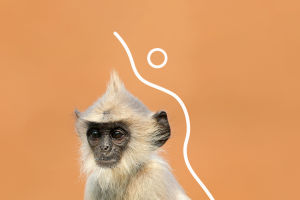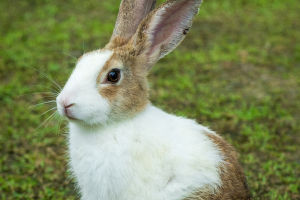The Rimatara lorikeet parrot is endemic to French Polynesia and is a critically endangered species, with only 1,500 left in the wild.
A third of them live on Rimatara Island, where their habitat is being destroyed.
On the island of Rimatara in French Polynesia, Tiraha Mooroa runs with his dog Koha at sunrise every day. Koha is a filthy Bled foxhound mix with one important task: sniffing out and killing any black rat he can find.
Koha is the island's only barrier against invasive rodents. It is important to keep the island free of rats. Rats, which come to the island by boats and cargo ships, are the biggest threat to native birds in the Pacific islands. They are very good at finding nests and feeding on eggs.
One bird is especially important: the Rimatara lorikeet. This beautiful bird has a deep red body and green and blue crests. Native to Polynesia, they are critically endangered, with a population of only 1,500 in the wild. A third of them live on the tiny island of Rimatara.
Rimatara Island is about 9 square kilometers and belongs to French Polynesia. The island has white sandy beaches and coconut trees. In three small villages inland and countless taro fields, road signs, bus stops, and buildings are painted with the island's symbol and mascot: Rimatara lorikeet.
In French Polynesia, Rimatara lorikeet is called "Ura", which means red. They were once widely distributed in the South Pacific. But in the 18th century, the bird was endangered due to hunting by Polynesians. Its red feathers are beloved and used to make cloaks and headdresses. In 1900, the bird was only found on the island of Rimatara.
However, Rimatara lorikeet on Rimatara Island has faced increasing threats since the 1990s, with numbers dropping from 1,000 in 1992 to around 500 today. The black rat's settling on the island meant a disaster for Rimatara lorikeet, which was compounded by other factors that led to further declines in numbers, such as habitat destruction and competition for nests.
In 2007, 27 birds were brought from Rimatara to Atiu Island in the Cook Islands in an effort to rebuild Rimatara lorikeet populations elsewhere. The conservation project, organized by the Rimatara lorikeet Conservation Society, the Cook Island Natural Heritage Trust, and several government and international partners, was a success.
Today, the Rimatara lorikeet population has risen to at least 400 on Atiu Island and a few on several atolls in the Kiribati archipelago.
In 2022, to better understand the Rimatara lorikeet parrot and its population decline, the Rimatara lorikeet Conservation Society launched the Bird's Nest Observation Project. The project was funded by the Office of Biosafety Abroad. All Rimatara lorikeet nests on the island are tracked and monitored via Bluetooth cameras. Mobile-triggered cameras can track any outsiders entering the nest.


